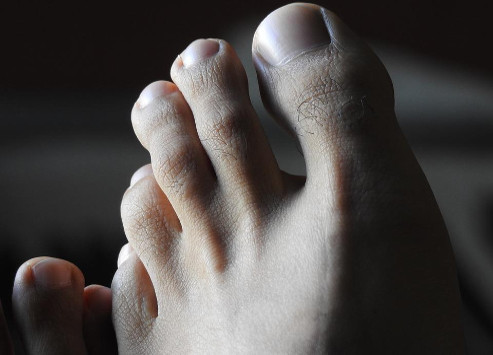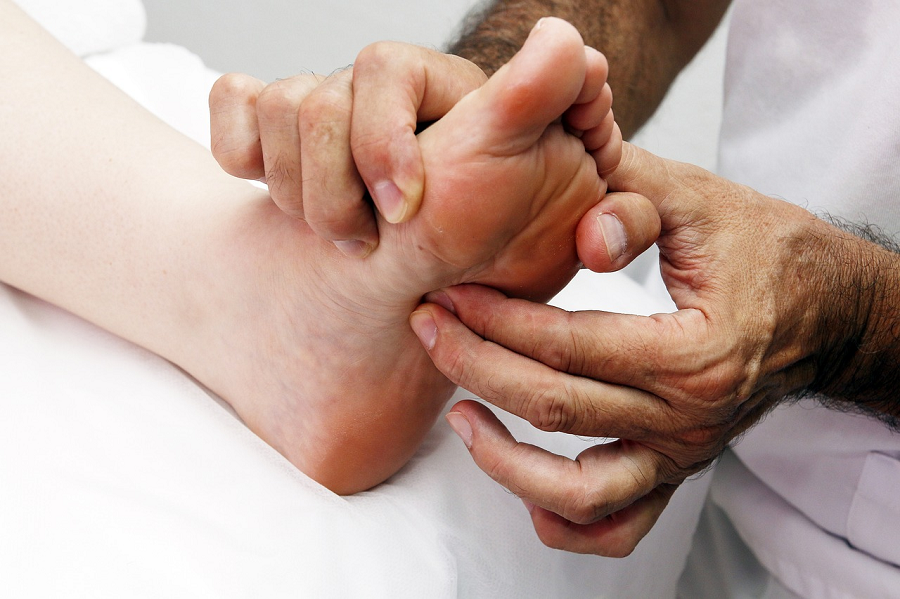Symptoms and Treatment Options for Hammertoe
There are all different types of Toe Pain
June 21, 2018Diabetics and Footwear
August 6, 2018A hammertoe is a deformation of the second, third, or fourth toe in one or both of a person’s feet. This gives the toe the ability to be bent at the joint upwards, similar-to the appearance of a hammer; hence the name “hammertoe”. This joint is known as the interphalangeal joint, and the main problem with a hammertoe is that it can cause muscle imbalance.
When a muscle becomes too weak, it can apply pressure to the toe’s tendons. This eventually causes the joint to become deformed. People who have a hammertoe can also develop calluses or corns at the top of the joint due to the hammertoe rubbing against the top of the shoe. Hammertoes can cause great pain and discomfort for people in more ways than one.
Wearing shoes that do not fit or have pointy toes is one of the most common causes of hammertoe. High-heeled shoes can also spur on this condition, since the heel forces the front of the foot forwards, downwards, and against the footwear. In due time, the toe muscle gets weaker, and eventually is in no condition to reinforce the toe.
Other factors that raise the probability of developing hammertoe include having a history of toe injuries, having long toe bones, and suffering from rheumatoid arthritis.

There are two classifications of a hammertoe: flexible and rigid. A flexible hammertoe means that you can still move and feel the toe. It is still possible to treat this type of condition without hammertoe surgery Houston, usually by just wearing a better pair of shoes that are wider, longer and are not high heels. Users can also try to pick items up off the floor with toes as a way- to strengthen the toe.
A rigid hammertoe means that you cannot move the joint. While better shoes can relieve you of pain temporarily, a podiatrist may recommend a custom orthotic device before resorting to hammertoe surgery Houston.
Hammertoe surgery is known to be effective for people who have this condition. There are usually four types of surgery for hammertoe: A tendon transfer, joint re-sectioning, fusion, and amputation.
- Tendon transfers move the toe back into its proper place within the foot by pulling the tendons back in place.
Joint re-sectioning involves cutting ligaments and tendons to help the toe back in place. - Fusion involves removing a part of the joint so that the toe is better attached to the foot, making the toe better aligned and stronger.
- Amputation involves the removal of the hammertoe entirely. This is considered the last resort; especially if the user is suffering excruciating pain and no other treatment options have worked.
- Hammertoe surgery is normally done on an outpatient basis, meaning that the patient can go home following the surgery.
Surgery is done with a local anesthetic on just the toe or foot. This will shorten the recovery time and avoid risks that sporadically come with numbing a patient. For people who are nervous about the procedure or fear blades and needles, general anesthesia is also an option.
Under a local anesthetic, they will not be able to feel anything in their foot, aside from a pulling sensation. The surgery should not give any pain.
Following the surgery, the patient will be expected to feel some pain in the toe. The patient will need to wear a special cast or boot and may need crutches in-order to walk. The patient will have to avoid putting pressure on the operated foot. It will take a few weeks for the toe to heal, but more frequent exercises over time can accelerate the healing process.


